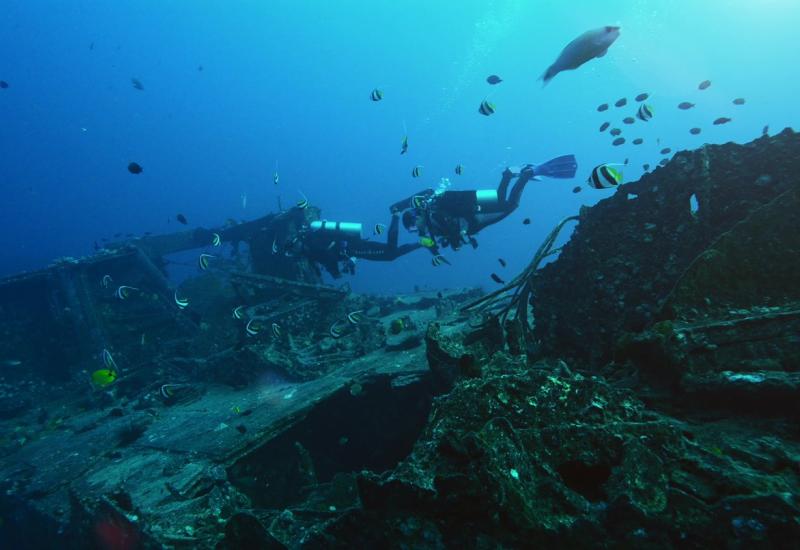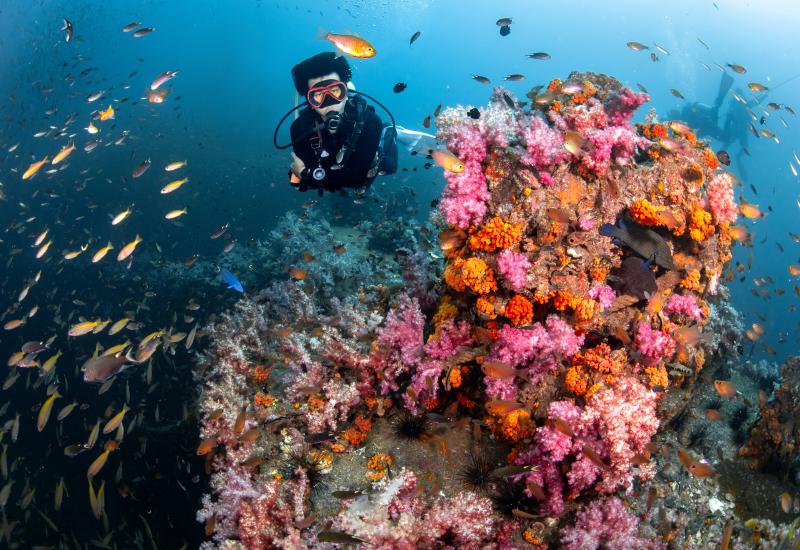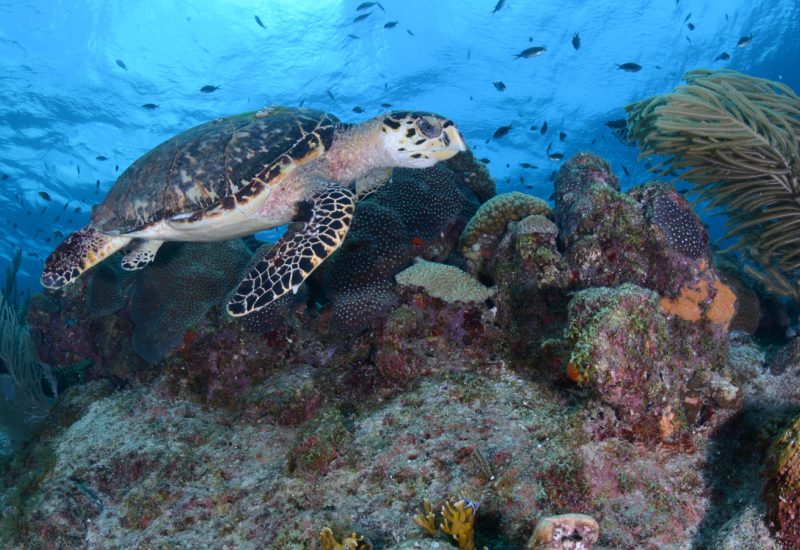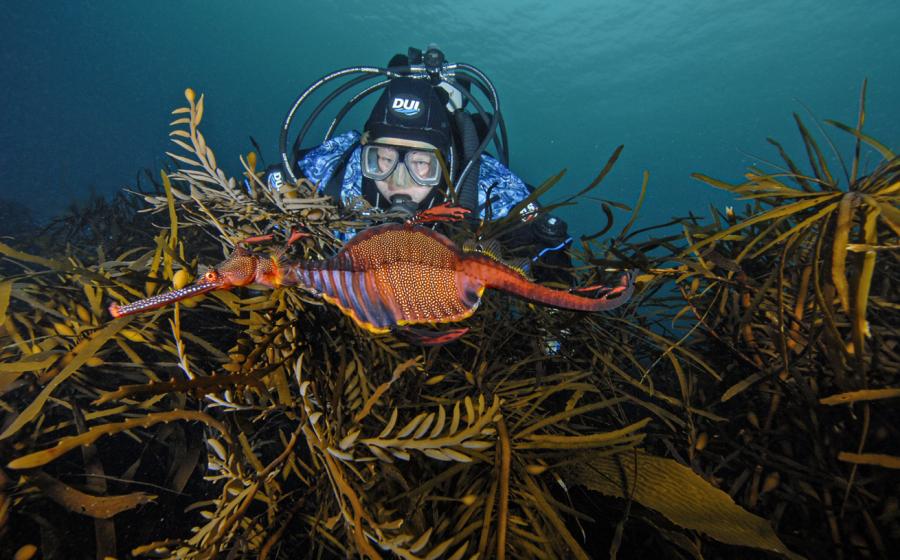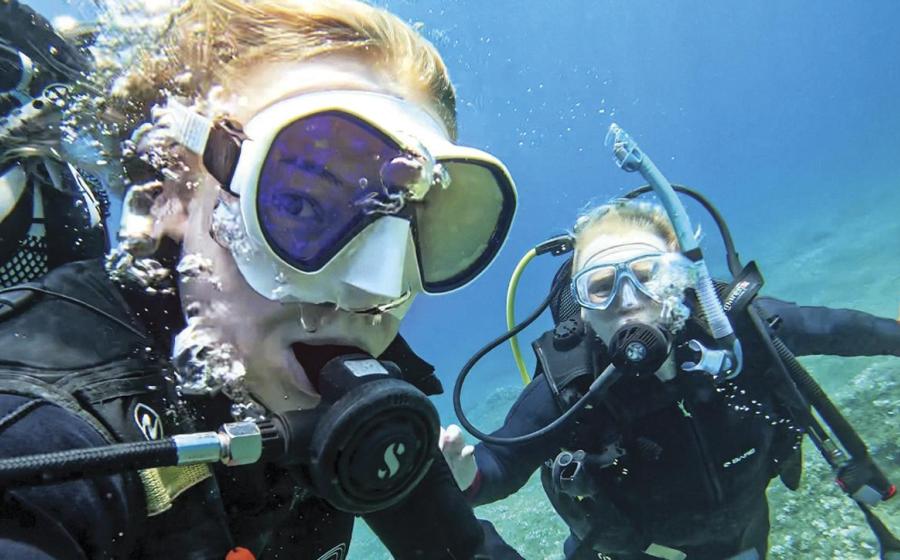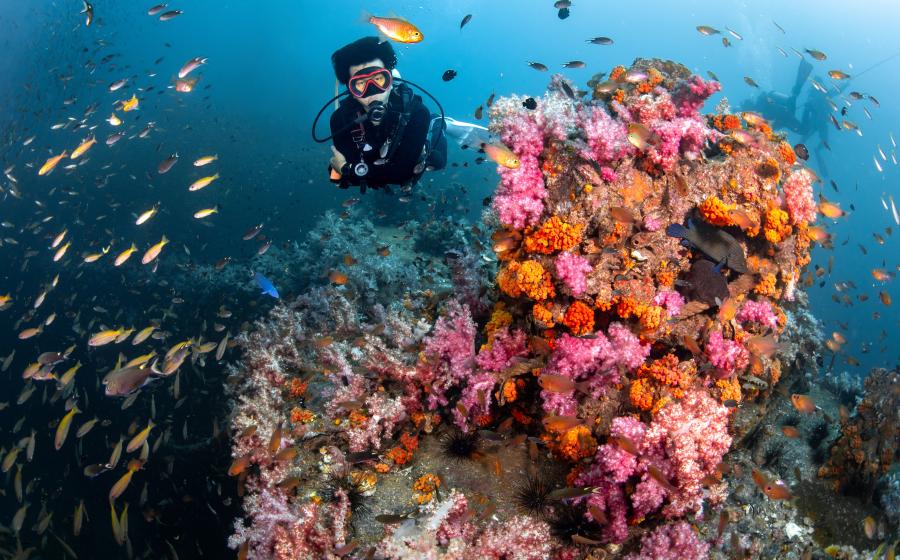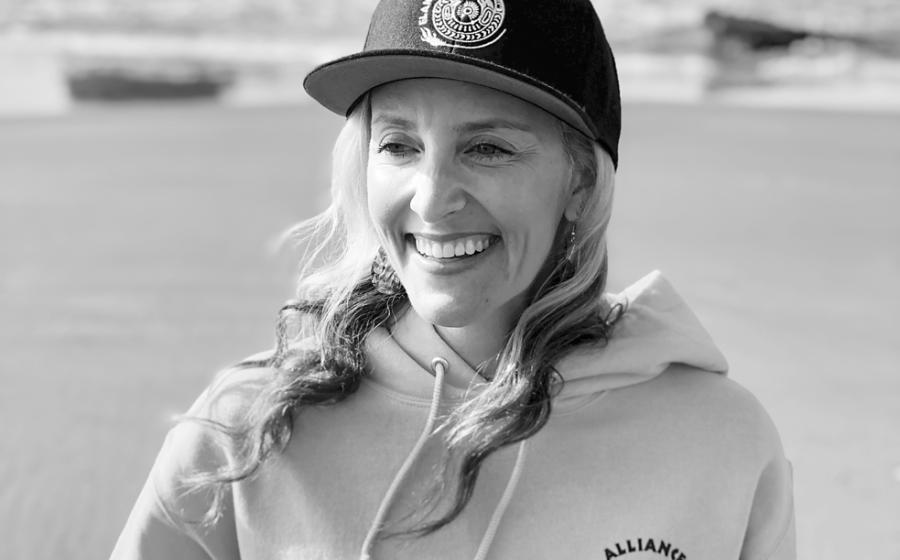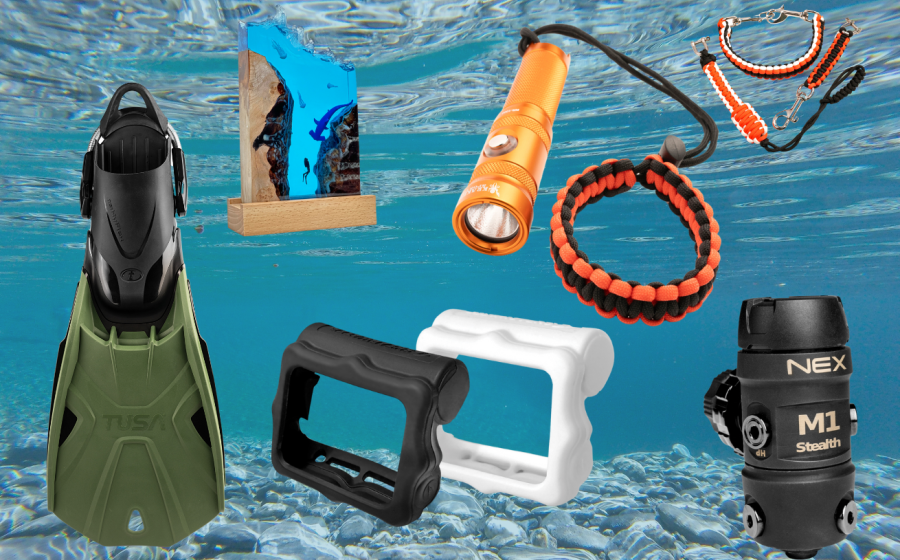In Search of Far-Flung Green Diving
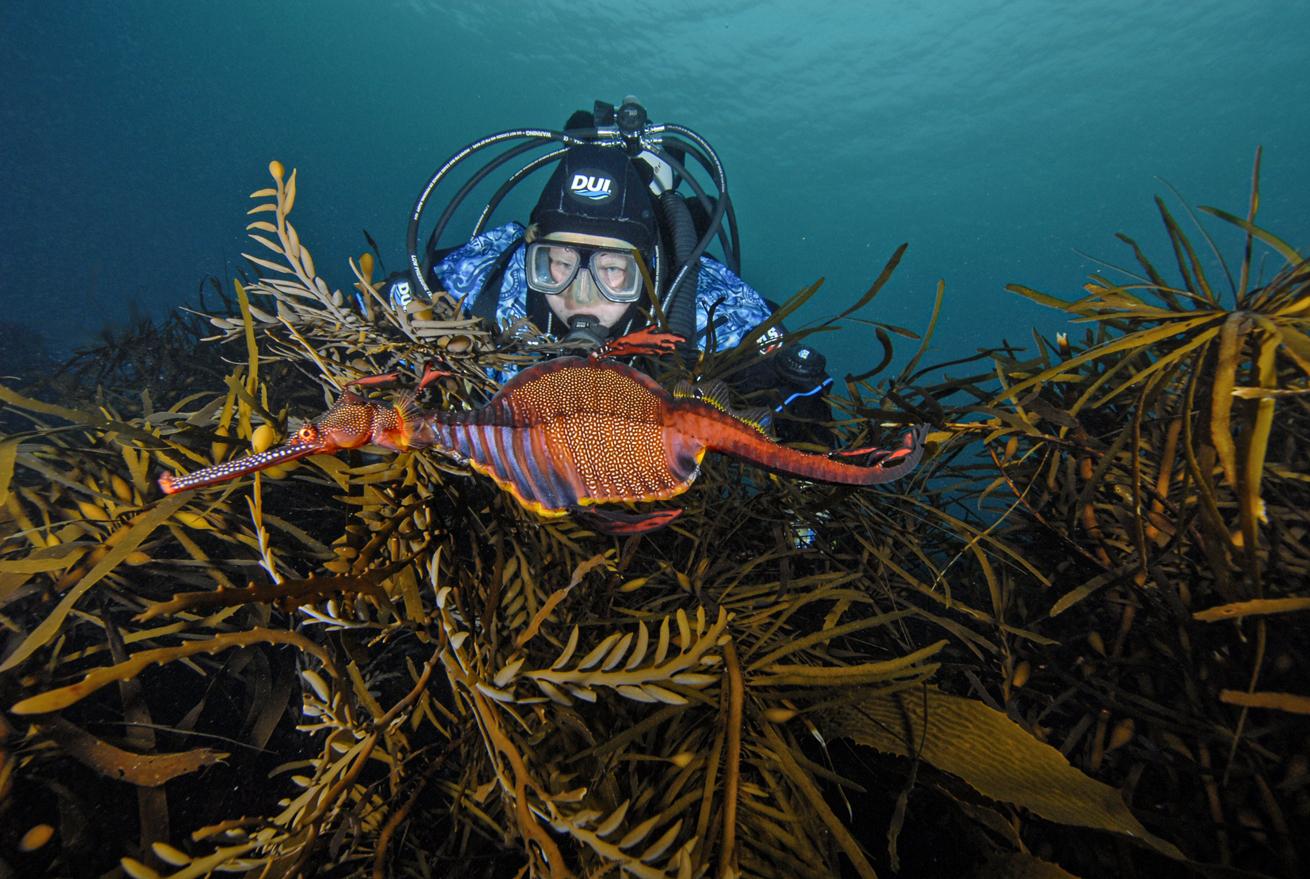
Courtesy Faith OrtinsPatience is rewarded with a close encounter with a vibrantly colored common seadragon on an expedition in Tasmania.
Faith Ortins sums up the power of ice in three simple truths: “First, it never gets old. Second, ice always wins—it’s the ruler of the environment and demands respect. Third, ice turns everybody into a 5-year-old kid. When you see it, you can’t help but jump, run, climb and play on it.”
Blue Green Expeditions, founded by Ortins and Paul Holbrook, is an adventure operator running expeditions worldwide, but it’s most known for its polar adventures. Divers come eye to eye with leopard seals, fin alongside city-size icebergs and help scientists collect data for research and conservation.
Related Reading: 5 Tips for Buying Scuba Gear for Kids
Raised in Massachusetts, Ortins came from a family with no background in swimming, let alone scuba diving. But living near the ocean spurred a deep curiosity within her. In 1979, at just 15 years old, she earned her scuba certification. Though her parents forbade her from diving with strangers, Ortins spent her weekends riding her bike to the local dive shop, asking other divers to take her for a dive. Her initial success rate hovered around 30 percent—once she began sharing her lobster catches, she became the diver everyone wanted to bring along. Some of the most skilled divers took her under their mentorship.
Ortins started her career as a science teacher but swapped the chalkboard for dive slates, purchasing a dive center. She witnessed the unique challenges women faced in the cold-water diving scene. Drysuits were uncomfortable and ineffective for women, crafted for masculine figures. Ortins sent relentless tailoring requests and feedback to drysuit manufacturer DUI, who recruited her to work for them. In 2010, she was inducted into the Women Divers Hall of Fame for her contribution to diving education.
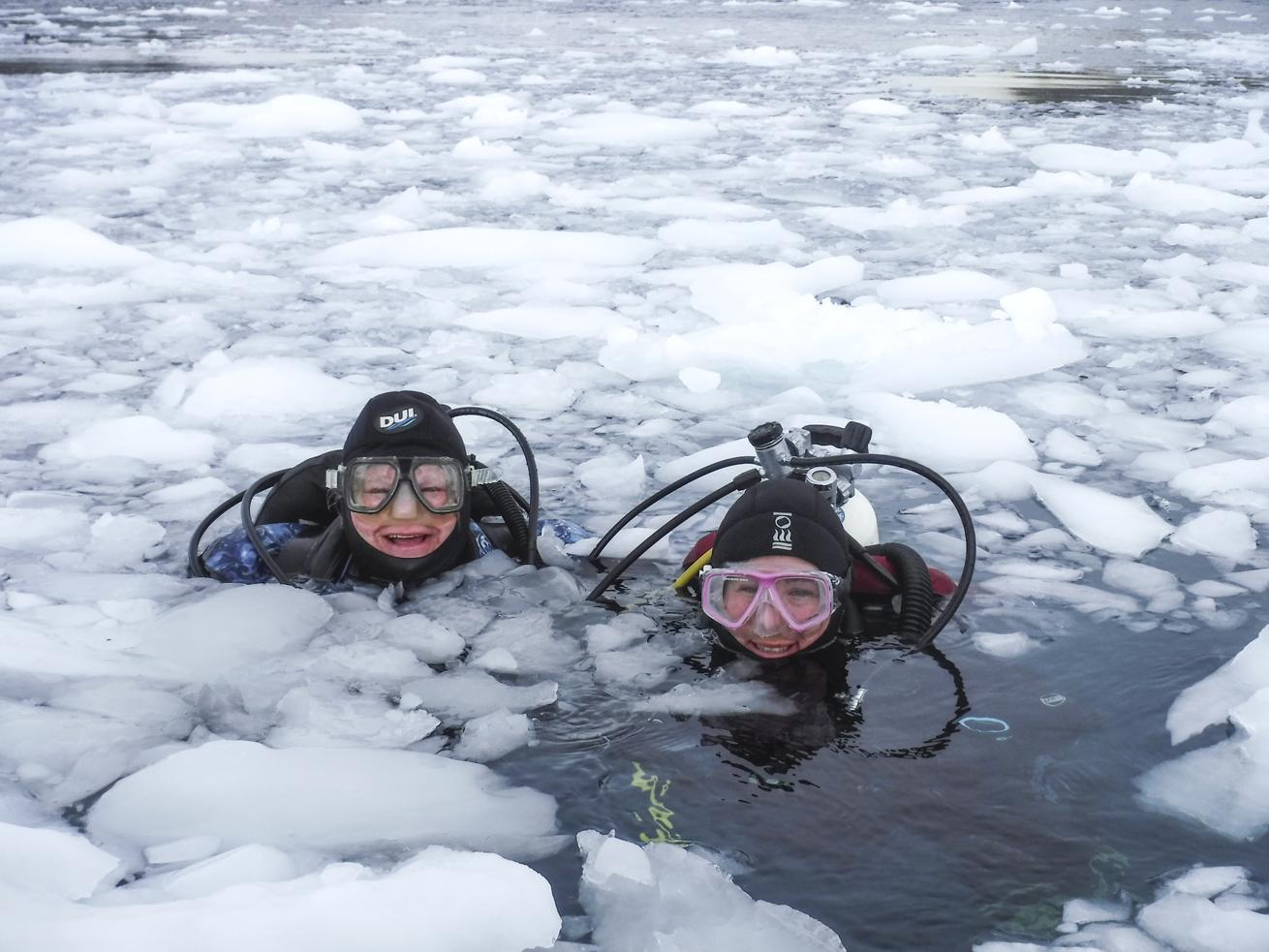
Courtesy Faith OrtinsFrosty smiles on the surface of an icy polar dive.
At DUI, her role as vice president of sales involved organizing trips to hardto-reach dive destinations worldwide. But when her duties called for more time in the office, Ortins amicably left to co-found Blue Green Expeditions.
“We want to get people to places they might not normally think of—places that are environmentally sensitive. We need to learn about them and support them.”
Every traveler can be involved with a conservation or research project on a trip with Blue Green Expeditions.
However, not everyone who joins a trip takes part in the polar expedition dives—only about half of the attendees do, because of the cold-water diving experience needed. A quarter are snorkelers, and the remaining guests venture out on land-based activities.
“Every person is involved with a project of some kind,” says Ortins.
In Antarctica, for example, land-based attendees usually have a better vantage point for whale sightings. These sightings are submitted to Happywhale, a citizen science program that charts whale populations and behaviors. Divers and snorkelers can submit leopard seal information, take water samples, remove marine debris and chart the benthic (seafloor) habitat of areas where cruise ships frequent to document the impacts on the marine environment.
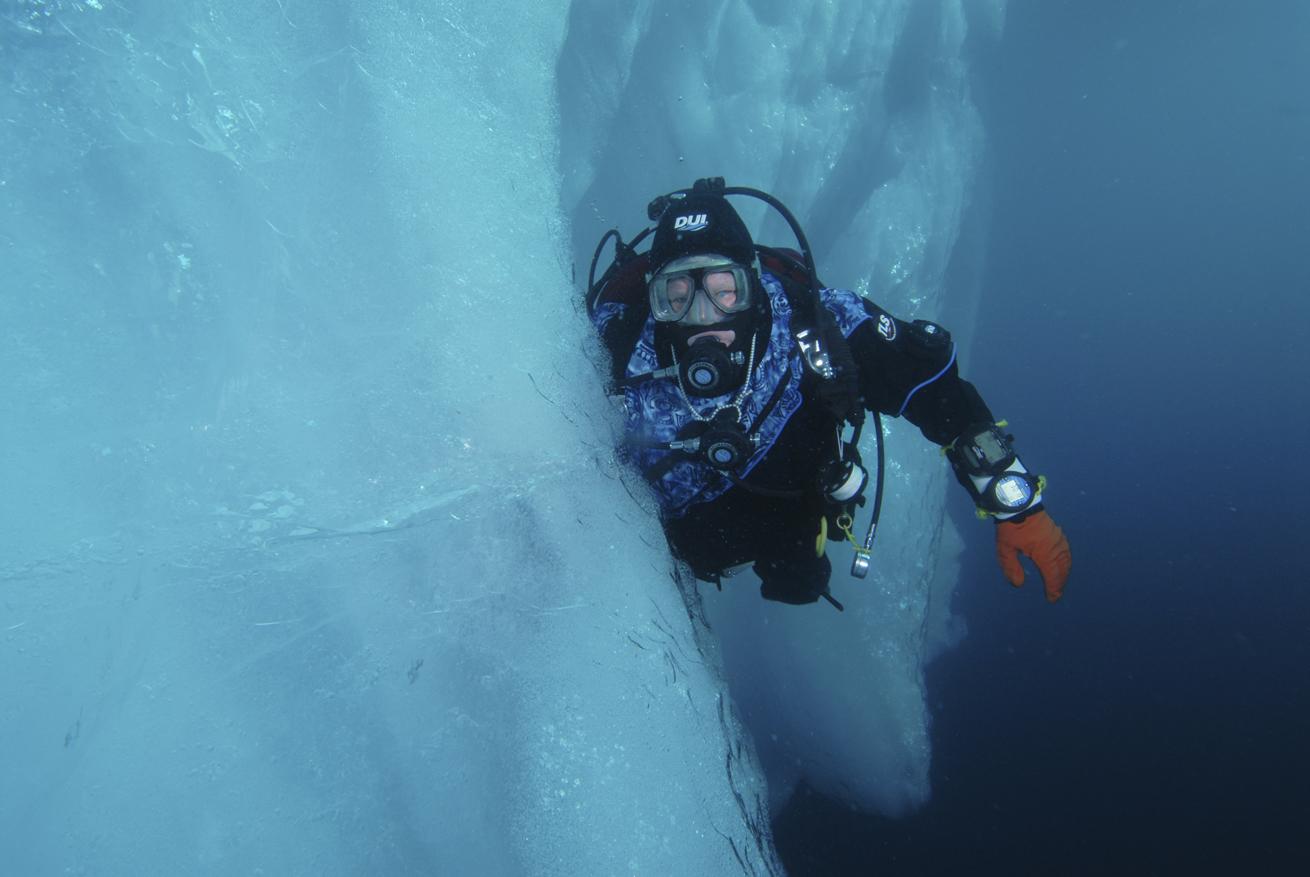
Courtesy Faith OrtinsSwimming alongside and touching an iceberg is a life-changing experience, says Faith Ortins.
Blue Green Expeditions was among the first to document sea star wasting syndrome in Antarctica, a disease thought to be confined to northern waters. This research helps marine scientists like Dr. Amy Moran study the cause of the devastating disease, which has affected 20 species of sea stars since its onset more than 10 years ago.
In the Arctic, the team collaborates with Oceanwide Expeditions to clean up and document plastic debris in Spitsbergen, an island near the North Pole. Eddies and currents within the Gulf Stream dump immense fishing nets and other waste on its icy shores.
“I can’t imagine never seeing ice again,” Ortins says. “The idea that we could lose ice in the polar regions within the next century is terrifying.”
“The beauty of the ice is hard to explain until you’ve seen it. It’s amazing. Swimming alongside an iceberg and touching it is a feeling I can’t put into words—it’s life-changing. You can’t photograph it. I want other people to experience and care about it,” Ortins says.
A citizen scientist trip to Antarctica typically has a crew of polar experts who host lectures, photography workshops, kayaking and snorkeling excursions, and ongoing scientific projects. Divers will experience sites in the Weddell Sea rarely visited by nonscientific ships.
To dive in the poles, divers must have at least 30 drysuit dives and be familiar with the equipment needed. Many divers attend one trip in the Arctic or Antarctic, then rush to sign up for the other, clocking in sites near both poles.
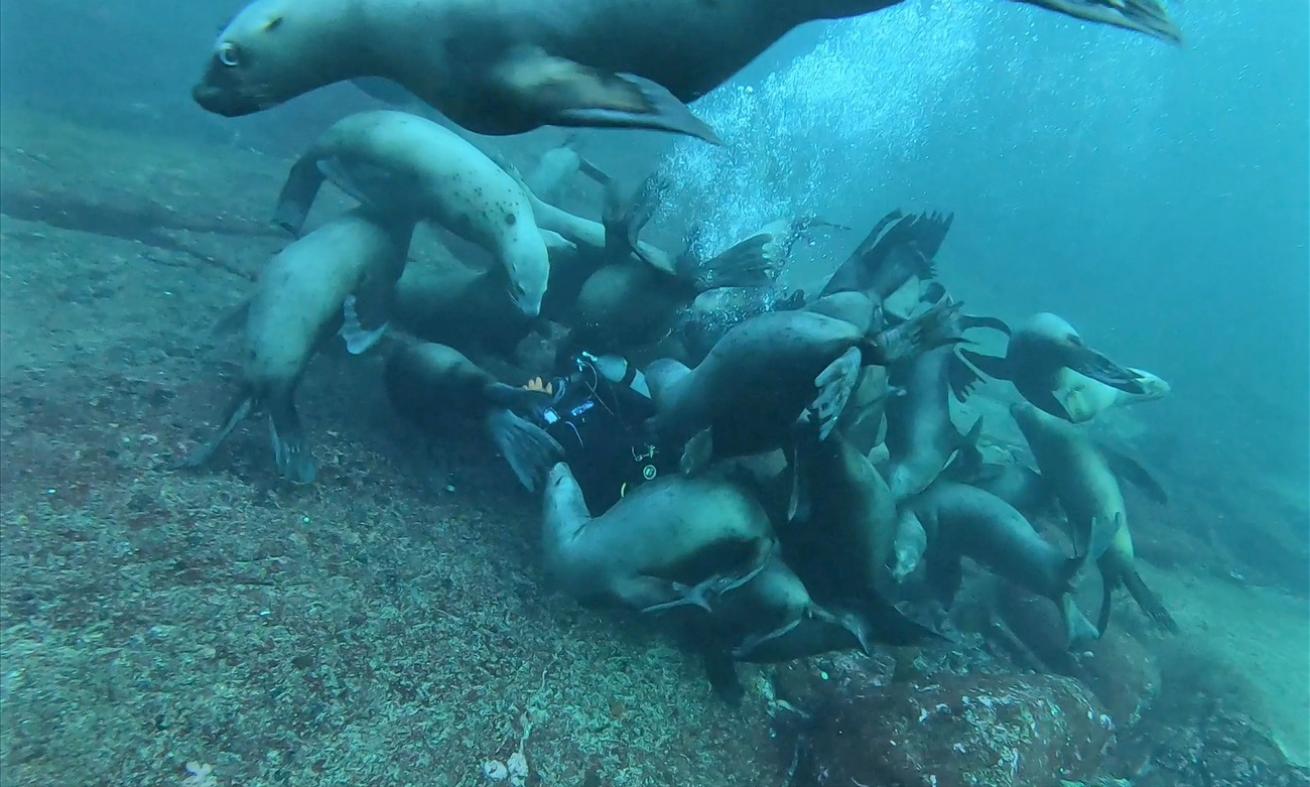
Courtesy Faith OrtinsA group of curious sea lions comes in for a close inspection of a diver.
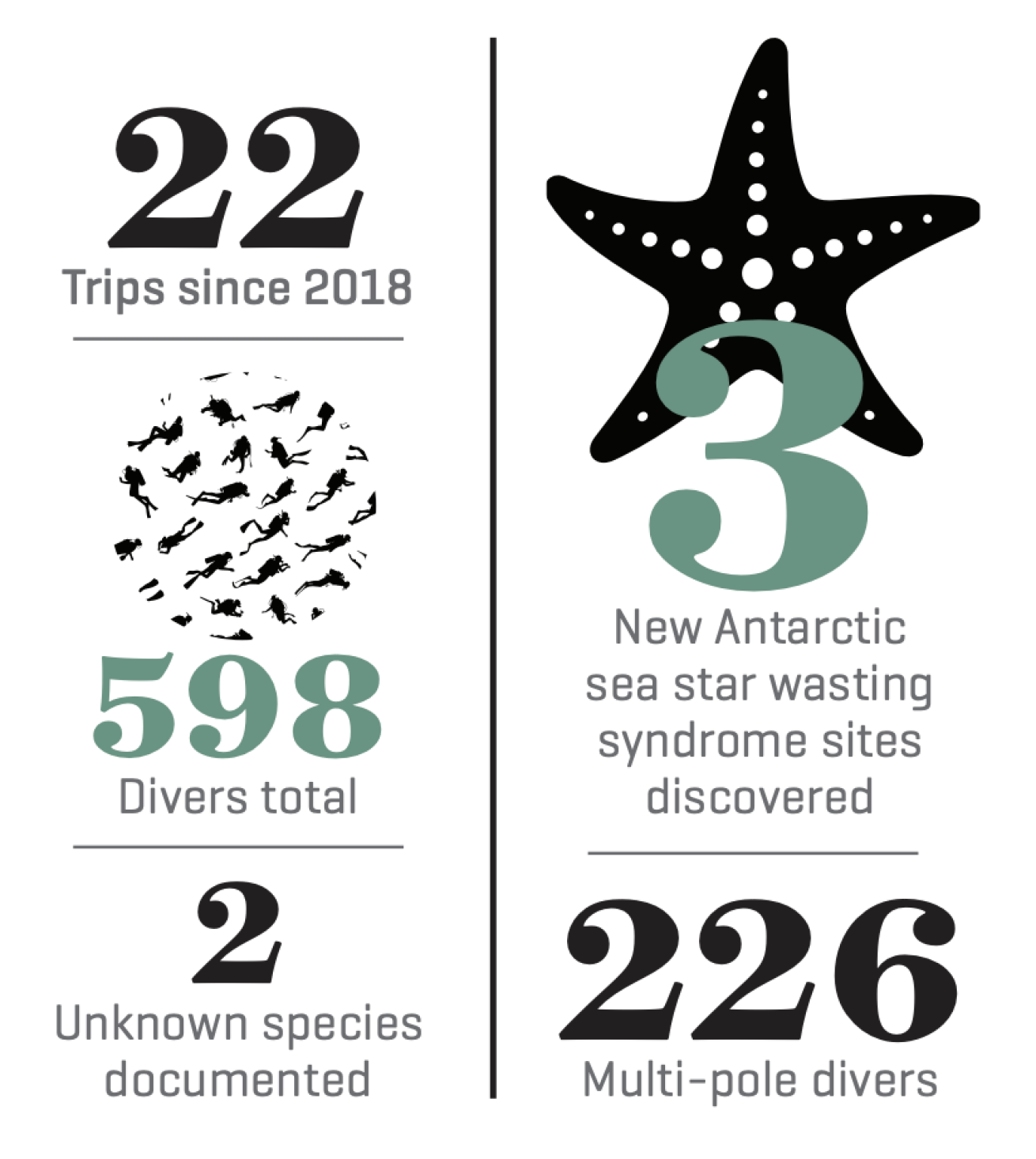
Beyond the poles, Blue Green Expeditions runs trips across the globe, each tailored to different marine ecosystems and skill levels. In Cuba, divers assist with reef surveys within Jardines de la Reina (Gardens of the Queen). In Norway, guests snorkel and document orcas. Over 300 miles off the Pacific coast of Colombia, divers plunge into the blue among hundreds of sharks, including hammerheads and silkies.
Because of their remote nature, these trips tend to facilitate deep human-animal connections. Intelligent animals like leopard seals, giant Pacific octopuses and cetaceans often come close to inspect the rubber-covered visitors.
Ortins cites a trip off the coast of Tasmania among her favorites, where divers explore a remote canyon tucked between a cluster of rocky islets.
Related Reading: A Kids Camp for All Ages in Hawaii
“There’s an incredible sponge garden with fish, bryozoans and sea whips. It’s so colorful, so clear, and there are so many fish. It’s like Fiji, only you’re drysuit diving in 60-degree water. I think, Wow, I can’t believe this exists,” says Ortins.
Blue Green Expeditions often chooses its trips based on the destinations that have made Ortins and Holbrook feel a sense of wonder.
“We want to share these places with other people,” Ortins says.
In 2025, Blue Green Expeditions will host trips to encounter mobula rays in the Sea of Cortez, shipwrecks and reefs off Newfoundland, coral reefs in the Philippines, polar bears and walruses in Spitsbergen and Greenland, reef sharks and rays in Indonesia, hammerheads and silky sharks in Malpelo, and an abundance of animals off the Galapagos. Their 2026 itinerary kicks off in Antarctica.

